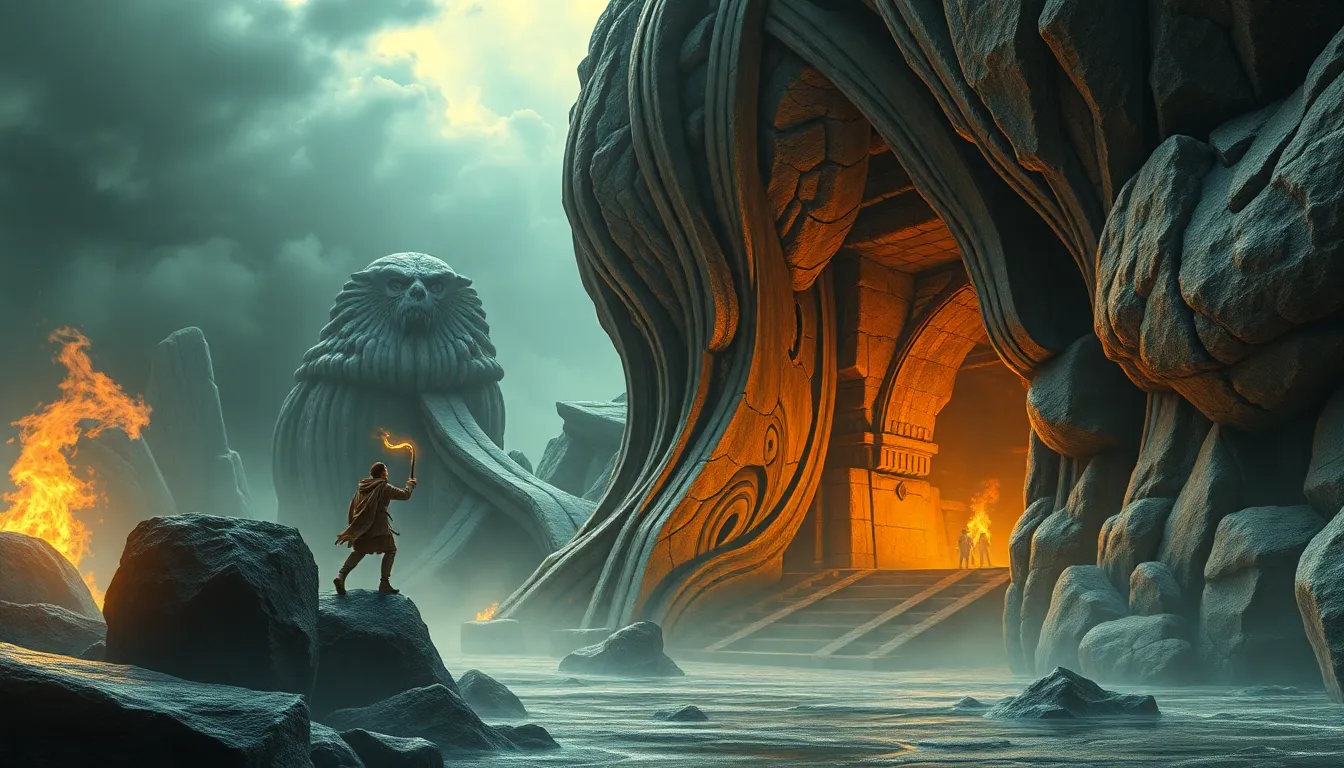The Deathless and the Maiden: Exploring the Dynamics of Gender in Koschei’s Tales
I. Introduction
Koschei the Deathless is a prominent figure in Slavic folklore, renowned for his malevolent nature and immortality. These tales, rich in cultural significance, explore complex themes of power, morality, and gender dynamics. Central to these narratives are the interactions between Koschei and various maiden figures, which reveal underlying societal norms and expectations regarding gender roles.
This article aims to delve into the dynamics of gender within Koschei’s tales, examining how the deathless character and the maiden archetype interact and what these relationships signify in broader cultural contexts. By analyzing their roles, we can gain insight into the ways folklore reflects and shapes gender perceptions.
II. Understanding Koschei: The Deathless Character
Koschei’s origins can be traced back to Slavic mythology, where he is often depicted as an evil sorcerer who cannot die. His character is steeped in symbolism, representing not just immortality but also the darker aspects of masculinity—power, control, and domination.
The concept of deathlessness in Koschei’s character has profound implications for masculinity. It suggests a form of toxic masculinity, where power is linked to the inability to die or change. Koschei’s immortality allows him to exert control over others, particularly the maidens, showcasing a relationship built on fear and manipulation.
Ultimately, Koschei’s role is that of an antagonist whose power dynamics serve to highlight the vulnerabilities of the maiden and the limited agency afforded to female characters in these tales.
III. The Maiden Archetype in Folklore
The maiden figure is a recurring motif in Slavic folklore, often characterized by beauty, purity, and innocence. In the context of Koschei’s stories, maidens typically embody both vulnerability and potential, serving as objects of desire for the Deathless character, while also possessing untapped strength.
- Attributes of Maidens:
- Beauty and charm
- Innocence and purity
- Resilience and resourcefulness
- Roles of Maidens:
- Victims of Koschei’s tyranny
- Agents of change and resistance
- Symbols of hope and renewal
The contrast between the maiden and Koschei is striking: while Koschei represents death and stagnation, the maiden represents life and potential. This dichotomy sets the stage for the exploration of gender dynamics throughout the tales.
IV. Gender Dynamics in Koschei’s Tales
The relationships between Koschei and the maiden reveal intricate power dynamics. Koschei often seeks to dominate and control the maidens, but these tales also present moments where the maidens assert their agency. The interplay of vulnerability and strength becomes a defining characteristic of their interactions.
For example, maidens may appear submissive at first, yet they often find ways to resist Koschei’s power, showcasing their resilience. This theme highlights the complexity of gender dynamics, suggesting that even in oppression, there exists a potential for defiance and empowerment.
V. Themes of Heroism and Sacrifice
In many narratives, the maiden transcends her initial role as a victim to become a hero. These stories often portray her defiance against Koschei as a courageous act of rebellion, challenging the traditional portrayal of women in folklore. The maiden’s journey is often fraught with sacrifice, reflecting the gendered interpretations of heroism.
- Heroic Traits of the Maiden:
- Bravery in the face of danger
- Resourcefulness and intelligence
- Willingness to sacrifice for others
Additionally, the sacrificial motifs in these tales can be seen as a reflection of societal expectations placed on women, where their worth is often linked to their ability to endure suffering for the sake of others. However, contemporary retellings have begun to shift this narrative, allowing for more empowered portrayals of female protagonists.
VI. The Role of Magic and Transformation
Magic plays a crucial role in Koschei’s tales, serving both as a tool for oppression and a means for empowerment. The magical elements often facilitate the transformation of characters, particularly the maidens, who can harness these powers to reclaim agency.
Transformation in these narratives can be viewed as a metaphor for female empowerment, symbolizing the potential for growth and change in the face of adversity. The duality of creation and destruction in these tales reflects the complexities of gender dynamics, where magic can both entrap and liberate.
VII. Contemporary Interpretations and Adaptations
Modern adaptations of Koschei’s tales offer fresh perspectives on gender roles, often reshaping the traditional narratives to reflect contemporary values. These reinterpretations frequently emphasize female empowerment, agency, and the subversion of traditional roles.
Through the lens of feminism, contemporary narratives challenge the patriarchal structures inherent in the original tales, presenting characters who defy expectations and assert their autonomy. Such adaptations highlight the enduring relevance of these stories and their capacity to evolve with changing cultural contexts.
VIII. Conclusion
In conclusion, the exploration of gender dynamics in Koschei’s tales reveals a rich tapestry of relationships marked by power, vulnerability, and the potential for transformation. The interplay between the deathless Koschei and the maiden figures serves as a lens through which we can examine broader societal norms and expectations.
As we reflect on these themes, it becomes clear that they remain relevant in today’s cultural context, inviting further exploration of gender in folklore and mythology. By continuing to analyze and reinterpret these narratives, we can foster a deeper understanding of gender roles and their implications in our society.



